Guatemala’s Bird Life
Winter refuge for many our continent’s
summer-breeding birds

Wood Thrush are very common sights in Guatemala's Central Highlands, hopping along the ground like robins. Photo by Mary Parker Sonis

The swath of mountains running along the Pacific coast are volcanic in origin. The next mountain ranges to the north are called the Central Highlands and are true mountains. Here - on the highest mountain elevations - is where the cloud forests can be found.

Primary cloud forest trees in Central America are Quercus – oaks with lineages going back to the oaks of North America.
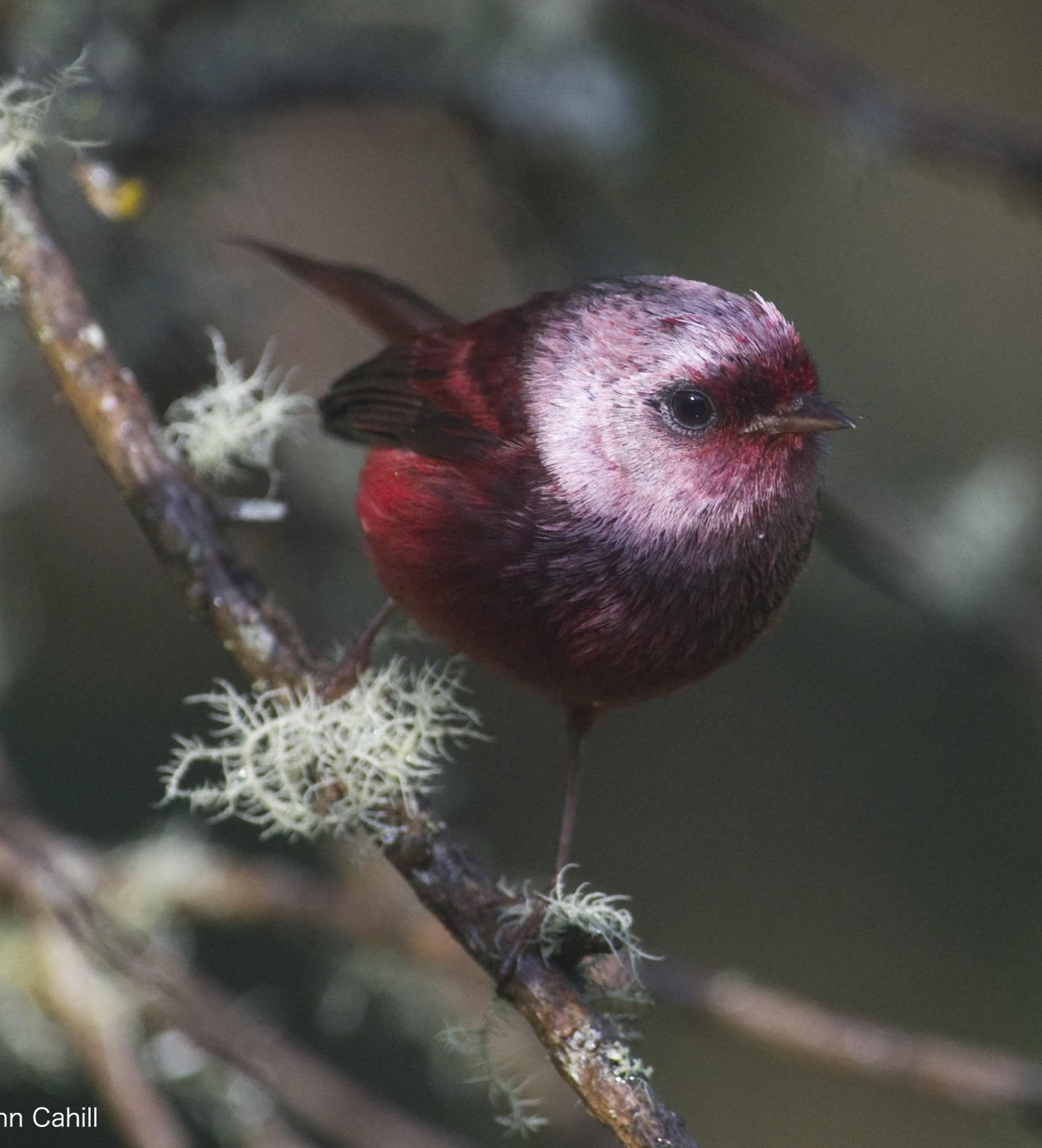
"This little warbler stayed home.” The rare cloud forest resident, the pink-headed warbler, is an endemic in the region. Photo by John Cahill.
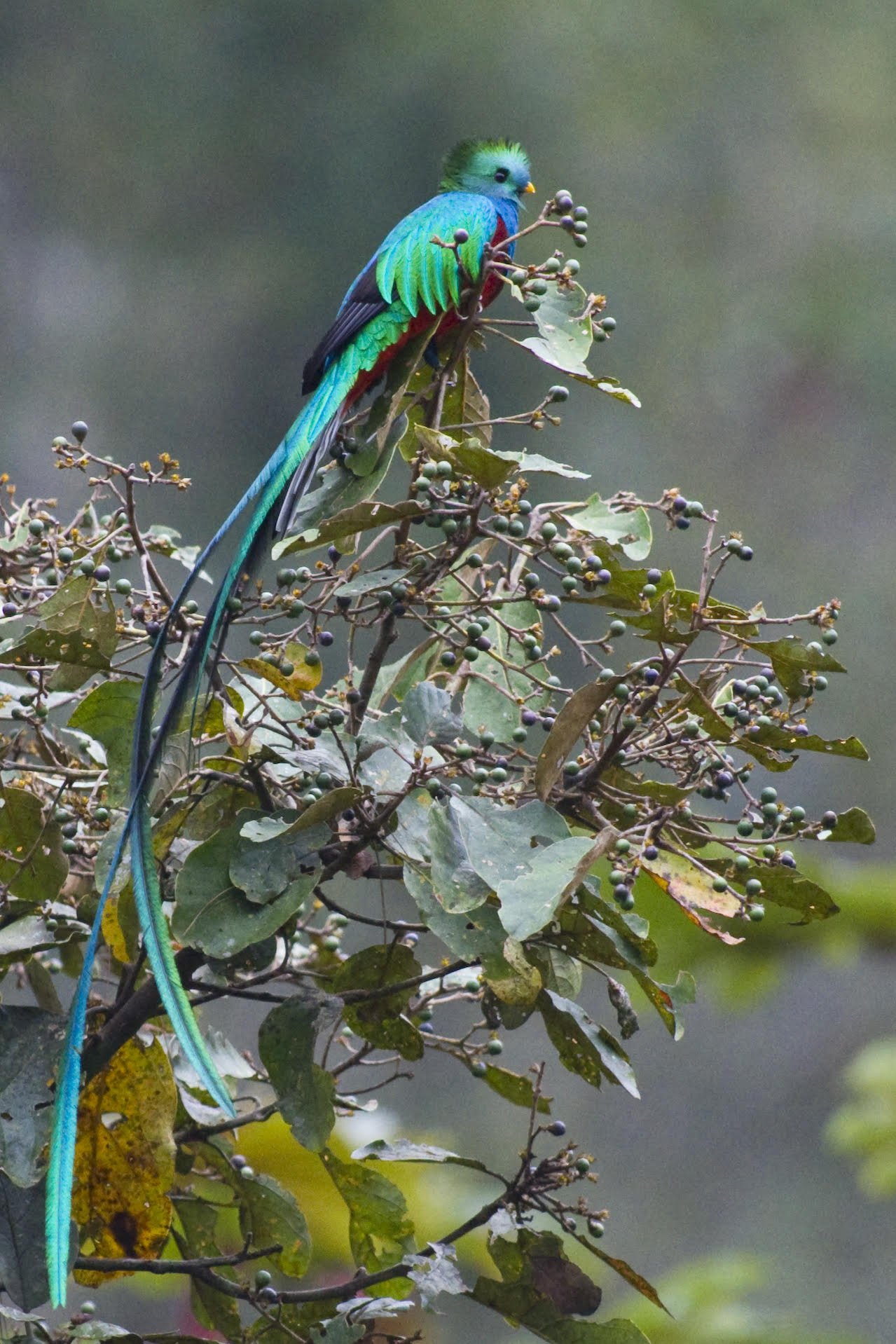
The larger variety of the resplendent quetzel. Photo by Rob Cahill.
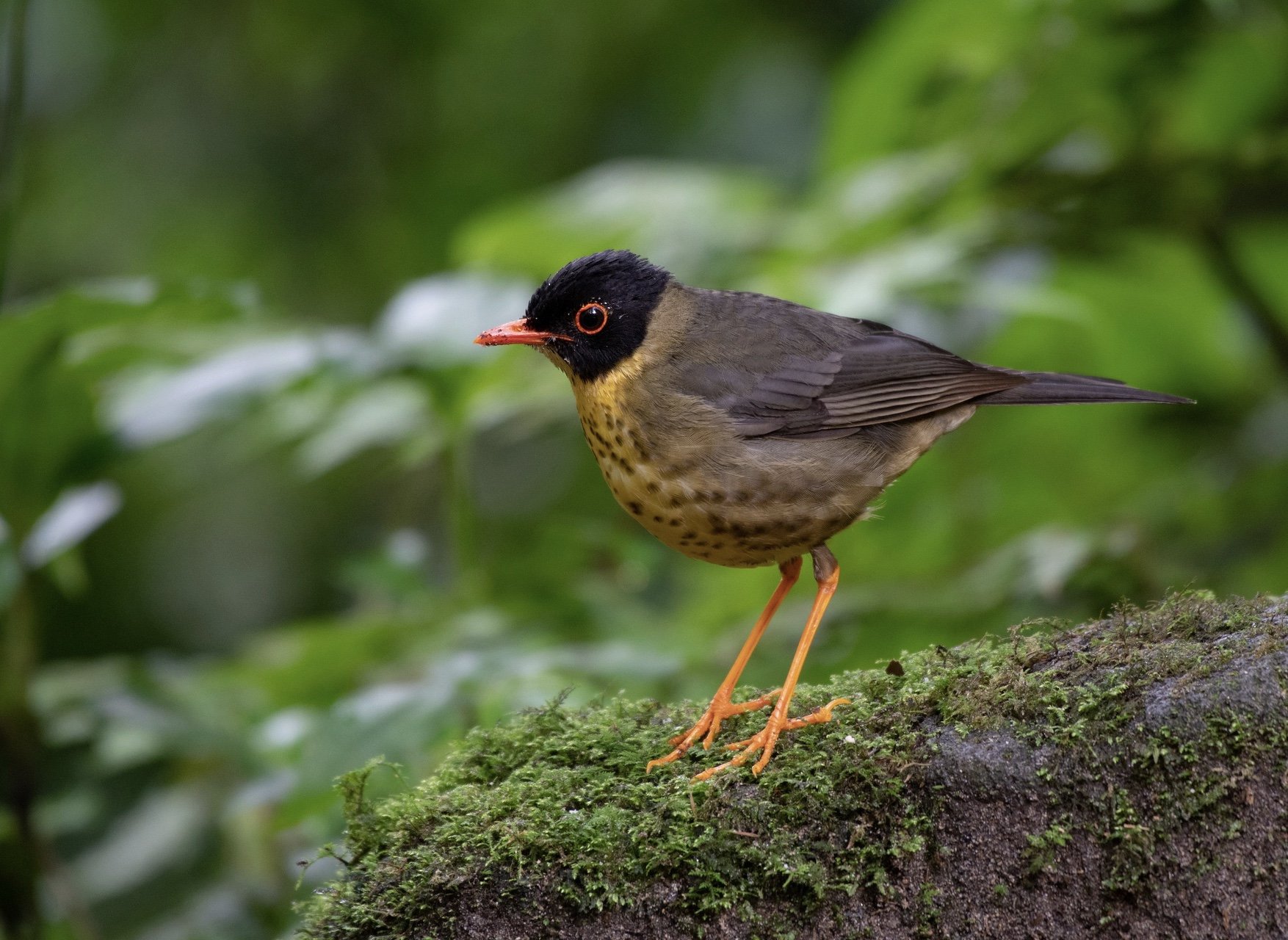
This kin of the migrating wood thrush, the attractive cloud forest resident known as the yellow-throated nightingale-thrush, remains in Guatemala year around. Both species are commonly sighted at CCFC. Photo by John Cahill.
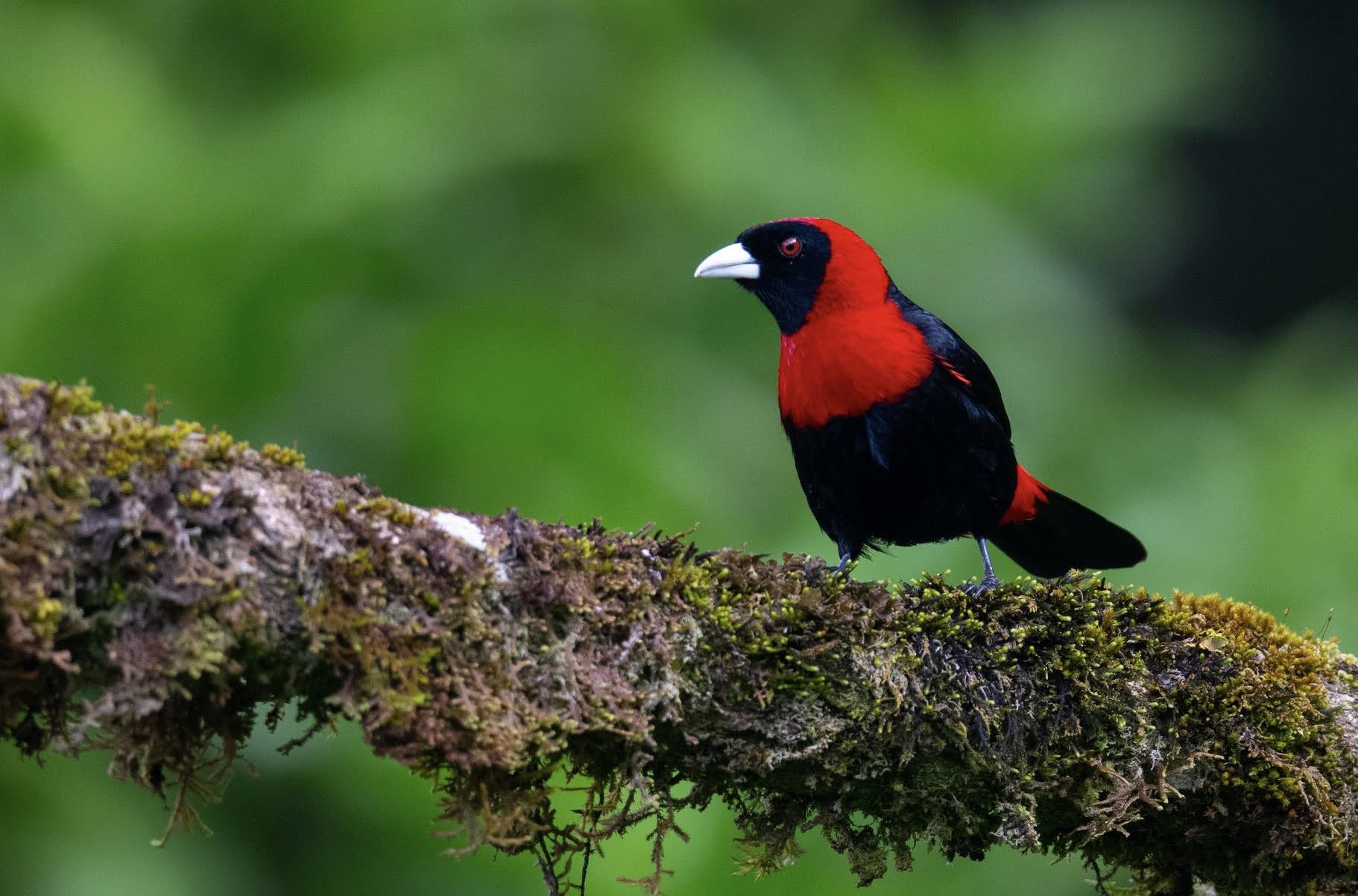
The summer tanager became a migrant, but its relative, the crimson-collared tanager, is a year-round resident in the Guatemalan Highlands. Photo by John Cahill
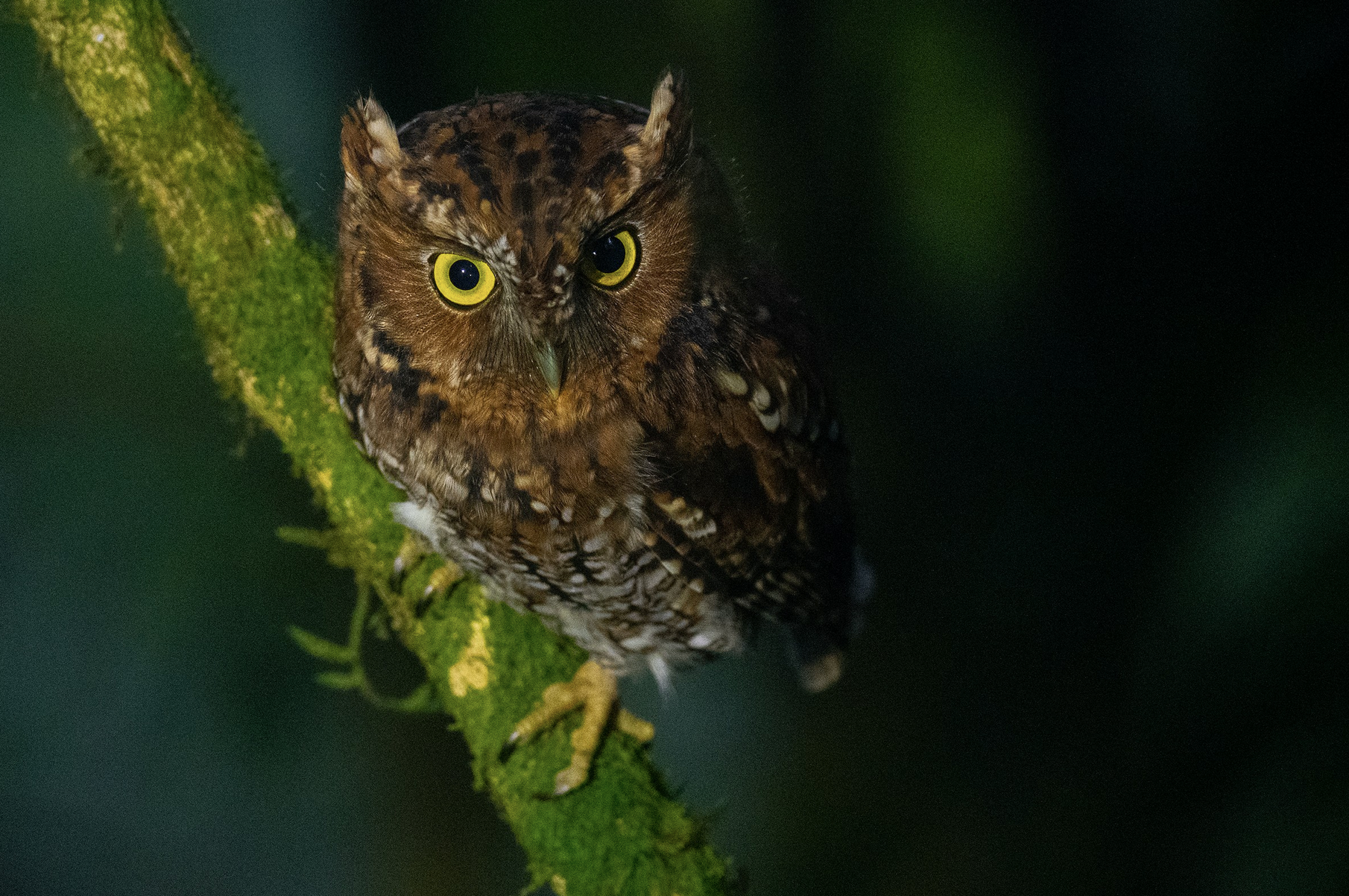
The exceptionally rare bearded screech owl traces its ancestry to North American screech owls, pushed south into Guatemala during the glacial age. Photo by John Cahill
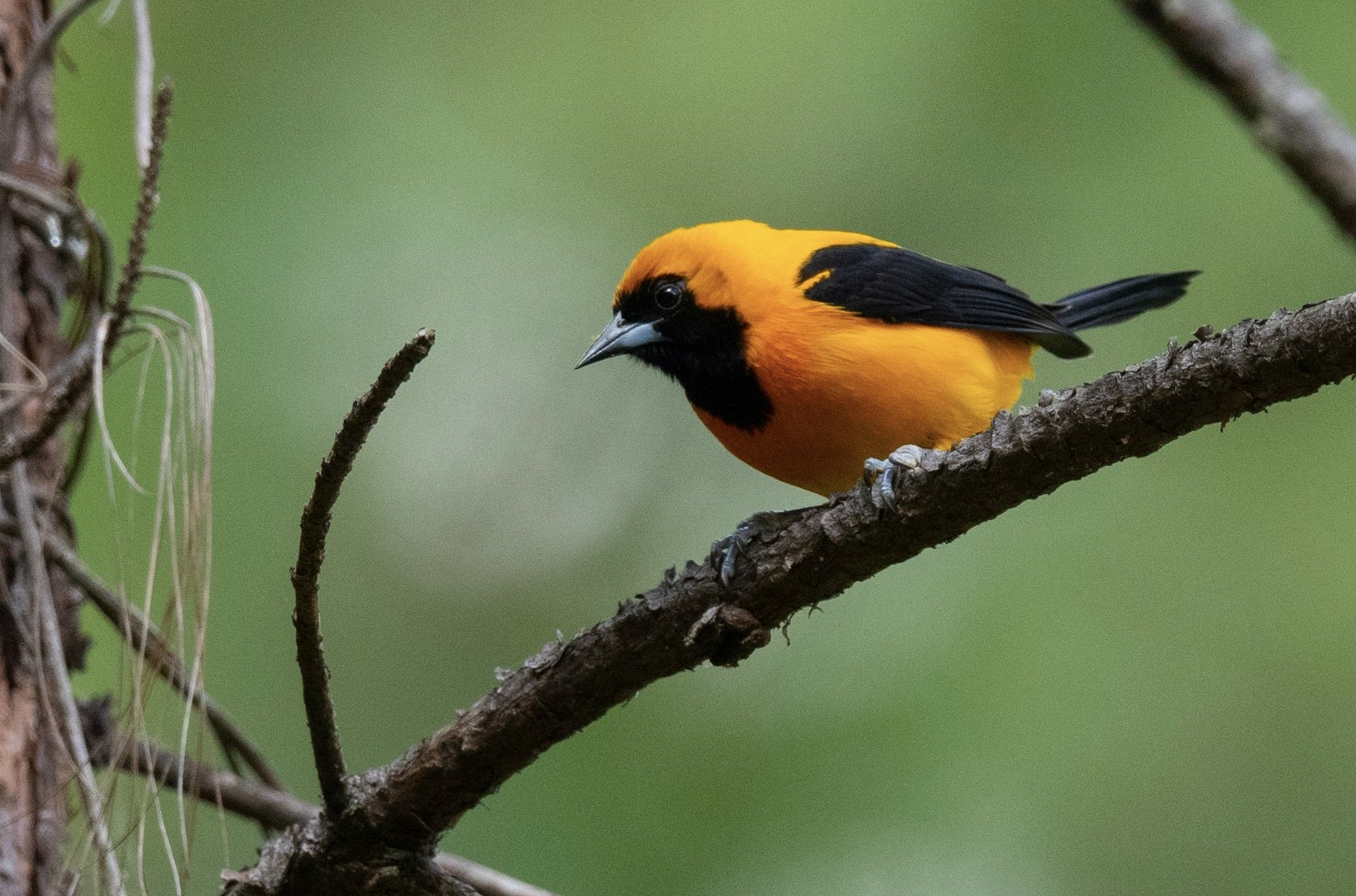
The yellow-backed oriole is a year-round resident at CCFC, and is joined in the winter by the familiar Baltimore oriole. Photo by John Cahill.
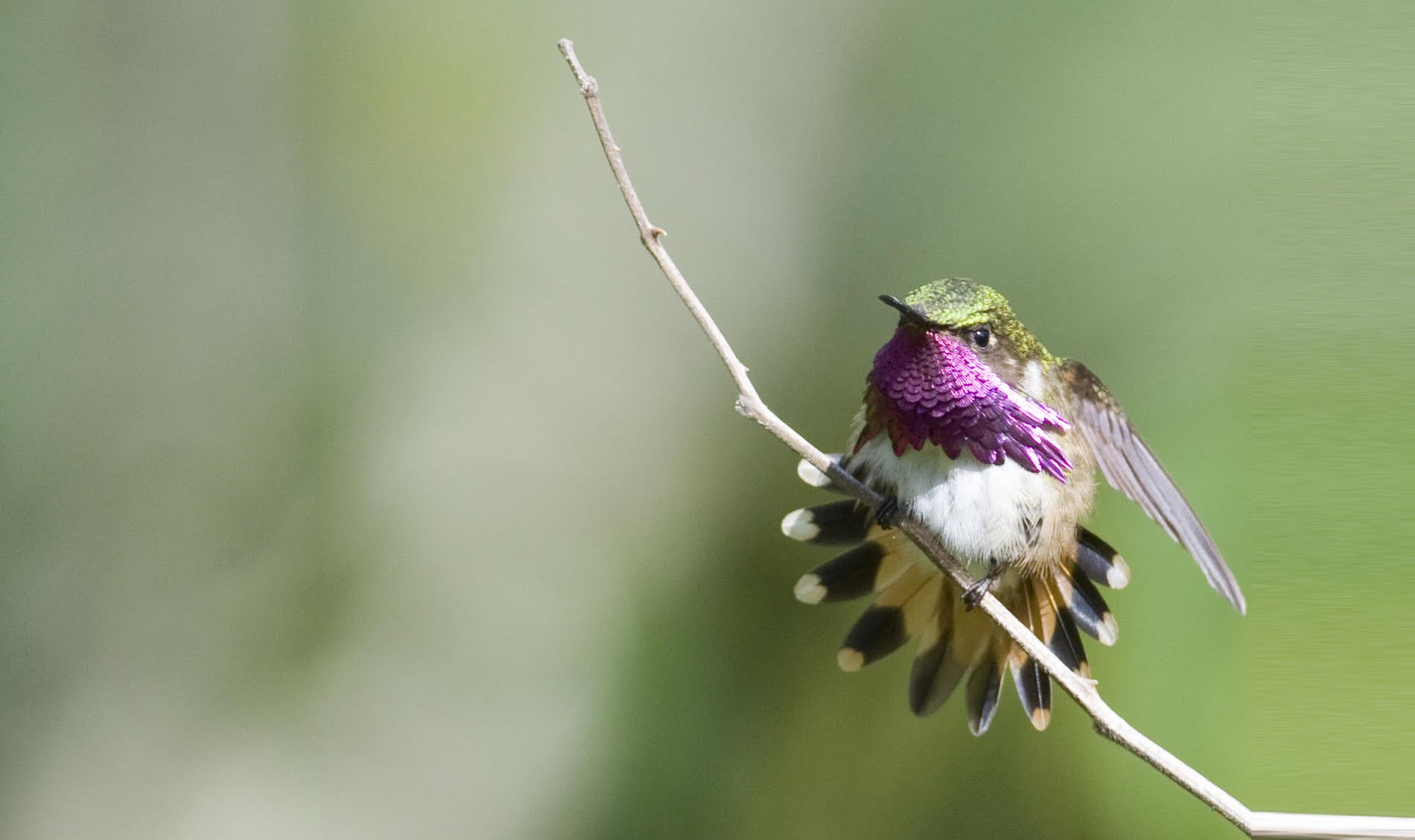
In Guatemala, this extremely diminutive resident, the wine-throated hummingbird, shares the campus region with 23 other resident species of hummingbirds. In winter, one of those hummingbird species is the ruby-throated from North America. Photo by Sunshine DeVries.
Cloud Forests. Cloud forests are rare worldwide. In Guatemala, they are restricted to the highest volcanoes of the Sierra Madre and the true mountains of Guatemala’s Central Highlands. Each cloud forest is a habitat-island, surrounded by lower-elevation oak-pine forests. They serve critical winter habitats for many of our temperate forest’s summer-breeding birds.
The Appalachian Heartland and Guatemala’s Central Highlands share 38 species of migrating birds! As this article is being written on the evening of October 23, 2024, four million birds will cross over Highland County before tomorrow’s dawn, right over the Arc of Appalachia’s headquarters. This number is mind-boggling, but it is just a small portion of the masses of birds vacating the temperate and boreal forests and heading to the Caribbean, Mexico, Central America, and parts of South America.
Here’s a short list of some the 38 species of Eastern Forest treasures we share with CCFC’s highland campus, many of which are flying overhead at this very moment: ruby-throated hummingbirds, indigo buntings, most of our vireos, both of our orioles, Kentucky warblers, common yellowthroats, Louisiana waterthrushes, hooded warblers, barn swallows, ovenbirds, worm-eating warblers, black-and-white warblers, blue-gray gnatcatchers, summer tanagers, rose-breasted grosbeaks, and gray catbirds.
Many of our summer-breeding birds shoehorn their populations into shockingly small geographic regions in the winter. Ebird data reveals that many migrating bird species funnel large portions of their populations into precariously small landscapes. Here are a few examples.
In the temperate forest, 100 acres of prime breeding grounds will usually hold no more than three pairs of prothonotary warblers. In their wintering habitat, however, their concentrations can soar to ten times that number.
When breeding, yellow warblers spread out between Alaska and the southern Appalachians. But in winter, millions of them — 13% of the global population — cram into Nicaragua, where they are frequently spotted in shade-grown coffee farms. Baltimore Orioles head each winter to similar agroforestry habitats, with 55% of their entire population overwintering in the lower Central American countries of El Salvador, Honduras, Nicaragua, and Costa Rica.
What would happen to these birds and others who winter in high-density populations if their wintering-over destinations were no longer bird-friendly?
The Maya Forest, including the Central Highlands of Guatemala, is an over-wintering hotspot for birds. The Central Highlands and the Yucatan peninsula - although not perfectly contiguous nor pristine, nevertheless boasts the largest block of forest left in Central America. It is favored as an over-wintering area by many birds. When we visited CCFC, we were delighted to see wood thrushes hopping on the forest floor as casually and prolific as robins. A third of the American redstart population also winters in the Maya Forest, while hooded warblers and Kentucky warblers flock to Guatemala’s Central Highlands. Here they are frequently observed gleaning thrips off the high-elevation cardamom crops the Maya people cultivate on the mountainsides.
Technically, our summer-migrants aren’t ‘our’ birds. The Eastern Forest’s migratory birds are on loan from their tropical homes. Most migrating birds visit the northern hemisphere for four or five months - just long enough to raise their young before returning home. Guatemala boasts spectacular bird diversity that represents millions of years of evolution - 753 species of birds, 487 of which reproduce in the country. The other 266 breed elsewhere – many of them in North America.
Flying North is worth it. All migrating songbirds require insects to raise their young. Berries might suffice as a diet in other seasons of the year, but only a carnivorous high-protein diet can sufficiently build the bodies and bones of the rapidly growing nestlings. With so much competition for insects, it is no wonder that tropical birds found the unbridled explosion of early summer insects and the longer day lengths in North America compelling, especially when resident bird populations in the north offered them little competition. Migrating birds successfully raise an average of 4-6 young per clutch, compared to their non-migrating tropical relatives who raise only 2–3 young per clutch - providing evidence that the flight to North America each spring is worth the investment in time, calories, and migrating perils.
Magnificent resident birds populate the cloud forests of the Guatemalan Highlands. The most famous show-stopper in Guatemala is the resplendent quetzal, the first sight of which often brings tears to the eyes of birders and nonbirders alike. We were privileged to see several individuals during our trip and they had the expected effect. Surely this is the most elegant bird in the world! The quetzals of Guatemala and the Central Highlands are larger than the ones in Panama and Costa Rica, and may one day be considered a separate species. Many other absolutely gorgeous native birds include the garnet-throated hummingbird, violet saberwing, wine-throated hummingbird, emerald toucanette, collared trogan, crimson-collared trogan, and barred parakeet - just to name a few.
Guatemala claims a significant number of endemic birds. Endemic Bird Areas (EBA) are regions in the world that boast high numbers of unique species. The Northern Mesoamerican Highlands is one such region, encompassing the Guatemalan Highlands as well as neighboring high-elevation ridges in southern Mexico, Honduras, and Nicaragua. This cool-temperature and contiguous high-elevation region is surrounded by low-lying habitat that isolates the high-elevation birds on an “island” habitat. Costa Rica and Panama’s Highlands, also isolated, compose a separate EBA, which is why a Costa Rica bird book for is not always helpful when birding in Guatemala. Endemics of the larger Guatemala’s Central Highlands include the blue-throated motmot; highland guan; bushy-crested jay, black-throated jay, and the holy grail of the cloud forests – the pink-headed warbler.
Guatemala’s ‘pull-me’ and ‘push-me’ birds teach us about our bird legacies. According to Rob Cahill, Co-founder of Community Cloud Forest Conservation (CCFC), ‘pull-me’ birds are tropical species that, pressed to find sufficient food for their young in a high-competition tropical environment, were pulled into making the long-distance forays northward that we call bird migration, knitting together the temperate and tropical forests in their dance of flight.
Rob likes to say there are ‘push-me’ birds, too. One push-me bird is the screech owl, a familiar year-round resident in North America. During the Pleistocene era, the screech owl was pushed south by cold temperatures of glacial advance. Some of the screech owls retreated into Guatemala’s Central Highlands where they adapted to their new home and became residents. As the climate warmed, instead of returning northward, the owls just moved higher up the mountains, eventually becoming their own own species.
Today the bearded screech owl is the rarest endemic in the Northern Mesoamerican Highlands EBA. It can reliably be found in only two or three places in Chiapas, Mexico, and about the same number of places in the Central Guatemalan Highlands. One of those places is at CCFC’s campus, and yes, we did get a good look at this rare little bird on our staff’s latest trip!
The most endearing example of a North American resident that became “captured” in the Northern Mesoamerican Highlands EBA is the winter wren. The winter wren is technically a migrating bird, but not typically beyond the boundaries of the North American continent. It too got pushed south during the Pleistocene, eventually becoming a year-round mountain resident in northern Mesoamerica, now known as the rufous-browed wren - a beloved songster at CCFC.

